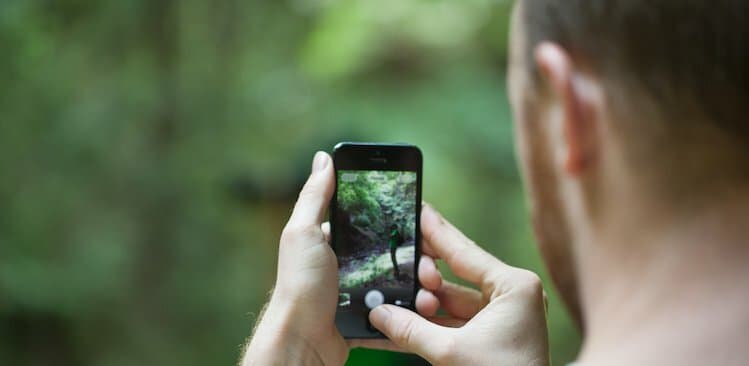Fact: Taking better photos is a way to set yourself apart online—whether you want to brighten up your social media accounts, strengthen your personal website, or generally improve your online presence. After all, one of the first things a recruiter sees on your LinkedIn profile is your background and your profile shot.
While you can certainly use all the free resources out there to choose high-quality stock photos, you can also tell a really compelling story by taking your own. Especially if you’re in a creative field, a highly polished Instagram account can say a lot.
And don’t worry if your expertise currently begins and ends with choosing filters on said Instagram account. There are a few steps you can take to make your images top notch—without buying an expensive SLR camera or subscribing to Photoshop.
Having taken a few courses myself on essential photography and design principles, I know that every good photographer had to start somewhere. You’d be surprised how following some tried-and-true rules can make a huge difference in your images.
The best part? These are strategies you can use with a smartphone and free editing tools available online.
1. Consider the Grid When Prepping the Shot
Also known as the rule of thirds, this method’s all about balancing a photo on a three-by-three grid. There are certain positions in a frame that are pleasing, such as in the center or at one of the intersections of this grid. Want the single main focus to really catch someone’s eye? These locations are pretty much always a sure bet.
You can turn on this grid in an iPhone by going to “Settings,” then “Photos & Camera,” and switching on for “Grid.” For a Samsung Galaxy phone, you can open “Camera,” click “Settings,” and switch on for “Grid.”
2. Avoid Zoom
If you ever want to get a good close-up shot of something, you’re actually not supposed to zoom into it. Especially on your phone, zooming in will compromise the quality and resolution of your image file. So, be sure to always either move closer to the subject to better frame it, or if that’s not possible, wait until you’re editing to crop it down to the right size.
3. Experiment
Every instructor I’ve ever had has stressed this one rule: Try different things. Whether it’s position, lighting, framing, closeness to the subject, and so on, there are always ways to mix things up and come up with happy accidents.
4. Take More Photos Than You Want
Photographers choose what work they display, so you’ll never see just how many shots they decide to scrap. I’ll tell you a secret: It’s a lot—probably around 90% of their shots. So, don’t be afraid to take 10 times more shots than you’re planning on using, seriously. Not only will you force yourself to take a variety of different photos, but you’ll also have a much wider selection to choose from (and a greater chance of getting something you love!).
5. Use Free Photo-Editing Apps
6. Crop to Optimize
Cropping’s essential, especially since you can’t (and shouldn’t) always zoom on a smartphone. Picking your crop means more than just focusing on your subject. As the editor, you want to consider the negative space surrounding the main focus. That could mean removing something distracting from the background, or rotating the image to make sure your plane of view is straight on rather than skewed.
This is also the time to think also about the medium on which you’re presenting your photo: Do you want it to be horizontal for a cover image, or a square profile shot? The purpose will definitely impact these kind of decisions.
7. Check Out Tilt Shift
A little-known secret, tilt shift is a feature that lets you create a fake lens aperture effect. What does that mean? It basically allows your photos to have more selective focusing and depth by blurring out the background. Because this kind of maneuver normally requires a fairly sophisticated camera, tilt shift is a really cool feature to use instead. Most free editing programs include it, so take a look at the neat stuff you can do with it.
8. Play With Contrast, Brightness, and Saturation
Depending on the photo, you’ll want to tweak the contrast (the difference in color tones), brightness (the lightness), and saturation (the amount of color). For example, contrast’s helpful if you’re working with dull images that could use a little more life. Brightness can create more dynamic lighting and shading, so it’s a useful option when you want to lighten up a dark image.
More saturation can be stunning with photos that seem more muted (think landscapes or sunsets) because it emphasizes the colors to an even greater extent. Though those are just some examples, it’s by no means an exhaustive list of their uses. See what happens when you tweak around each of these settings to get a feel for what works for your purposes.
At the end of the day, the old cliche holds true: A picture says 1,000 words. So making the right impression to a hiring manager Googling you is key. And with today’s technology, learning the basics isn’t so much a matter of skill and training as it is having the right tricks handy.

